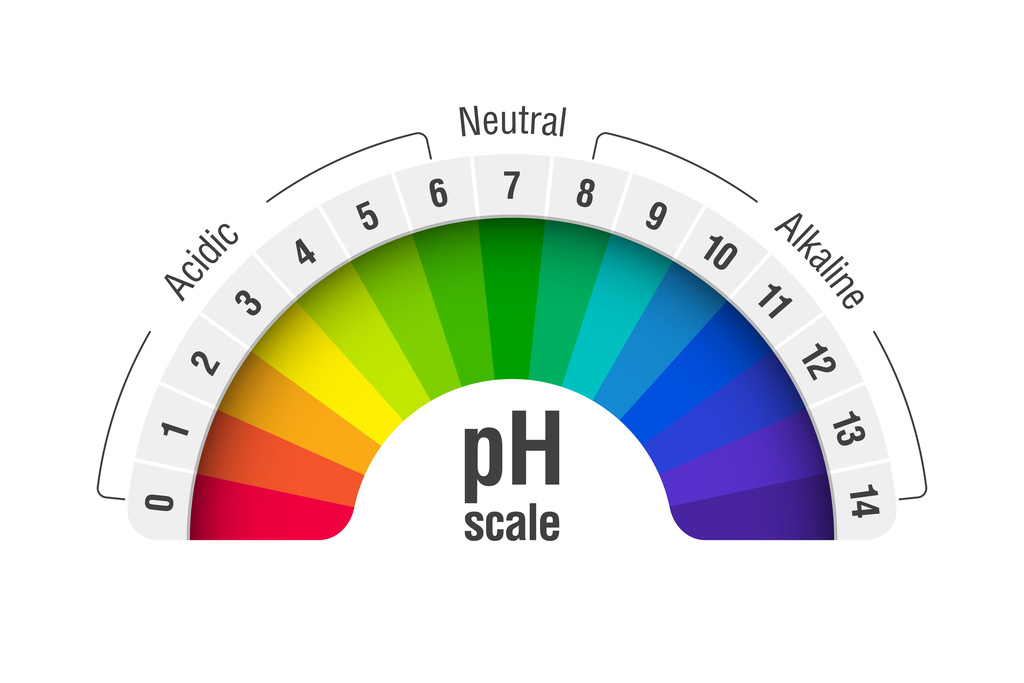A Koi pond in your backyard is an incredibly rewarding fixture, giving homeowners a consistently tranquil space to relax and spend time outdoors. However, many homeowners struggle to determine how to best maintain the Koi pond on their property, as these water features require delicate care. In this article, you can learn the ideal pH level for your Koi pond.
If you are considering installing a Koi pond on your property or already have one in your yard, finding an experienced pond maintenance company is essential to ensure your fish stay healthy. With years of experience designing and maintaining Koi ponds for the residents of Memphis, TN, Midsouth Ponds is a premier option for homeowners in the area.
What Is Water pH?
To understand how to best care for your Koi fish, it’s crucial first to understand how to monitor the status of the water in your pond. There are multiple ways to measure different elements of your pond, but measuring the pH level is the most vital to your pond’s overall health. This metric measures the acidity of the pond water, an essential element of Koi fish health.
The pH scale goes from zero to fourteen, with high pH meaning less acidity (aka basic) in the water. Test kits can provide an accurate gauge of this level, allowing homeowners to lower or raise the pH as necessary for the health of the plants and animals in their pond. In the following sections, we’ll discuss the ideal pH level for Koi fish and how to control the pH level in your pond.
Ideal pH Level for Koi Fish

If you want to ensure your Koi fish are as healthy as possible and that your pond thrives for a long time, you need to control the conditions in your pond. When it comes to managing the pH level of your pond, the most important thing to focus on is balance.
We suggest keeping your water somewhere between 6.0 – 8.5. While a more neutral pH level is most beneficial for Koi fish, a stable level of acidity is also vital.
Although Koi fish are delicate animals and require close attention, they can adjust to their environment as long as it stays consistent. Therefore, avoiding dramatic swings in water pH balance is more integral to Koi fish maintenance than consistently keeping the pond at a specific reading.
What Factors Contribute to Determining pH Level?
Controlling the pH level in your pond is essential, but some factors that can change the pH level are out of your control. The following sections will cover some of the factors that contribute to determining the pH level in your pond.
Local Water Supply
The factor that has the most significant impact on your pond’s pH level is the local water supply in your area. This water will make up most of your pond water, so it is a bit of a challenge to alter the pH level too much compared to that of the water supply. Different areas of the country receive water from distinct sources, so checking the local supply level is an excellent place to start.
If we had to boil it down, the most common reason the pH level changes rapidly is the pond owner refilled the pond with the garden hose and forgot to turn it off. This adds a significant amount of municipal water into the pond, thus creating an imbalance.
Rain and Precipitation
While most of the water in your Koi pond will come from the local water supply, some of it will come from rain or other precipitation. This water typically doesn’t impact the pH level too significantly, but homeowners should check the balance after periods of heavy rain.
Carbon Dioxide
Another factor contributing to your Koi pond’s pH level is carbon dioxide. This compound is a waste product from plants and animals and can raise the acidity of your pond. Regularly monitoring the pH level is a great way to ensure the carbon dioxide levels in your pond don’t get too high.
How to Adjust pH
Fortunately, adjusting the pH level in your Koi pond is pretty straightforward. We suggest using a pond detoxifier that will tackle the root of the problem, not just the pH.
Other Factors to Consider
When maintaining your Koi pond, there is more to think about than just the acidity of the water. The following sections will cover other crucial elements of Koi pond maintenance and setup.
Correct Depth
A pond with sufficient depth is essential for Koi fish to live a long, healthy life. There is no need for the pond to be too deep, but the water depth should be at least 24” feet. The depth of the pond is vital so that your Koi has enough room to survive and the pond doesn’t freeze through in cold weather, harming the fish.
Ideal Temperature
If you’re thinking about building a Koi pond, you may be wondering if Tennessee’s climate would allow these fish to thrive. Since Koi fish can hibernate beneath the ice, they are highly resilient and even survive freezing temperatures. Koi fish typically prefer cooler water in the summer, so ensure your pond has enough shade to keep your fish comfortable if your water depth is not at that 24” level.
Pure Water
Technology is still a significant factor in Koi pond design and installation, even when the ponds appear to be completely natural. To maintain a healthy ecosystem, you’ll need to keep your Koi pond’s water clean and circulating. To accomplish this task, you will need a filter and skimmer, as well as a pump to keep the water from stagnating.
Get Premium Koi Pond Maintenance Services Today
Maintaining a Koi pond doesn’t have to feel challenging! These installations are meant to offer homeowners hours of relaxation and enjoyment. If you need help keeping your pond at the ideal pH level for a Koi pond or any other aspect of maintenance, Midsouth Ponds can help. We design, install, and maintain some of the most beautiful Koi ponds in the state.
Our team has the knowledge necessary to keep your Koi fish happy and healthy all year long. We have years of experience helping Tennessee residents maintain their ponds, so fill out a form on our contact page to get started, today!



